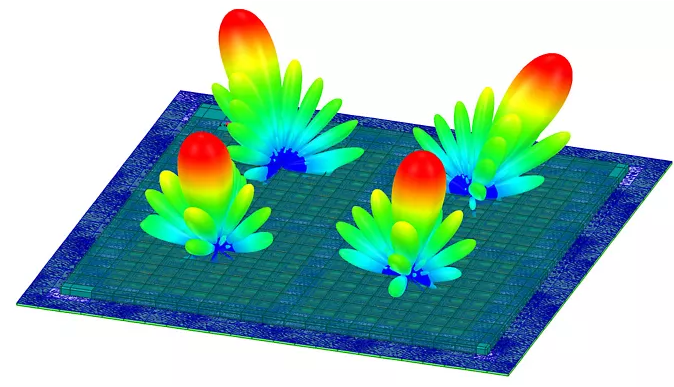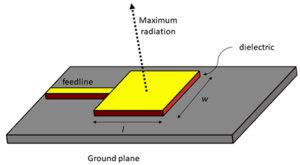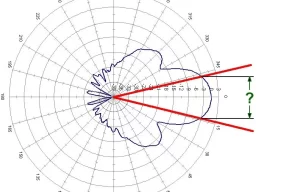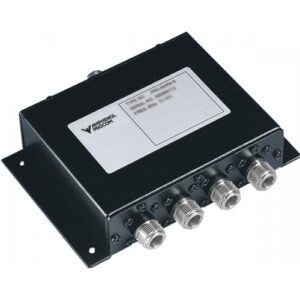Table of Contents
Optimize Antenna Design
The first capacity of improving the efficiency of the antenna is meticulously refining the design of the antenna, thus tailoring the device to the specific application. The process of designing the device begins with choosing the right kind of antenna. A dipole, monopole, an array, or a loop may be required, depending on the operating frequency and environment. The size of the selected antenna and its operating frequency is the next factor. For instance, a quarter-wave monopole, which is typically used to broadcast FM radio at around 100 MHz, should ideally be about 75 cm long. The size of the object and the operating frequency must correspond, as the quarter-wavelenght implies. Assuming that either the frequency is fixed or it is possible to determine the axis along which the antenna should be long, a significant efficiency loss may be predicted. In such a case, the efficiency may reduce time’s magnitude, with the designers often seeing a 50% reduction in efficiency.
The next consideration is the shape of the antenna. For example, a Yagi-Uda antenna is highly directional and may improve gains, making it almost a must-have for TV reception. Calculating the number of directors based on dimensions will increase the Yagi antenna’s gain from 7 dB to 14 dB, thus almost doubling the effective range of the device and not increasing power consumption in any way. Insulation and compatibility of the selected materials are the other factors to affect the selected integrals. In general, if possible, materials such as copper or silver – that is, materials with low resistivity are preferable.
While the cost can be reduced by using materials such as aluminum, they are more likely to suffer from efficiency losses and are more fragile, and the overall lifespan of the device will be reduced. The final recommendation is to use simulation tools that will forecast how an antenna will function before it is produced and placed into use. Simulation tools, such as AFSS and CST Microwave Studio, can simulate how an antenna will work in an environment and help tune the designs of the antenna, for instance, make it especially suitable for urban areas where buildings may block and reflect waves.
Use High-Quality Materials
Material choice is the first and most important factor to consider regarding antenna efficiency. The material in question should have intrinsically low resistivity, with one of the best material every person in the field would agree to be copper. With a resistivity of about 1.68 x 10^-8 ohm meters, copper has among the best electrical conductivities when compared to other materials that can be used, such as aluminum.
Particularly, the more cost-friendly aluminum has approximately 2.82 x 10^-8 ohm meters resistivity; it would provide approximately 30% less efficiency than copper in transmitting and receiving the radio frequency signals. The chosen substrate material is also extremely important in relation to how the antenna reacts when in use. More specifically, for microwave frequencies, the substrate should have low dielectric constant, as signal delays and attenuation tend to be lower when it is the case.
When compared to the more common FR4 having a dielectric constant of about 4.5, Rogers 5880 having a dielectric constant of 2.2 can lead to more than a 200% increase in antenna’s respective efficiency. Taking into account that the use of such antennas is often required in high-speed reactors, as well as satellite communication and even radar, any increase in the antenna’s signal transmission rate is of primary importance. Lastly, especially for outdoor antenna use, a corrosion and shock-resistant material, such as stainless steel, should be used. It has high additional costs of initial preparation and ever-increasing cost over time, but it is the most cost-efficient material in terms of the long run, as it requires no maintenance or changes for extremely long periods of time.

Proper Impedance Matching
Proper impedance matching between an antenna and its transmission line is crucial in maximizing signal efficiency and reducing unwanted reflections that can wreak havoc on the rest of the system. Impedance matching keeps the impedance of the antenna and the transmission line the same in order to see the least amount of signal per watt lost.
For a point of reference, consider a basic setup of a residential TV antenna. The required matching is with a 300-ohm ribbon cable on the antenna side and a 75-ohm coaxial cable in the rest of the house which includes the television jacks. A balun, or a fiilter with an electrical impedance less than the incoming line, can simply adjust these on both sides; while it is not a true transformer, it matches and converts the impedance. As such, instead of losing possibly up to 10% of the power in the cable through signals radiating from the wires, nearly all the power reaches the household’s television receiver without significant reflections.
Similarly, in radio frequency or amateur radio applications, electrical length must be adjusted based on the transmission line in order for the power transmitted to equal the amount that arrives at the antenna. As a reference, a 10% reflected signal from an unequally matched system is known as Standing Wave Ratio . Ideally this value should be 1:1 but a value of 1.5:1 is acceptable and typical; moreover, reducing the S.W.R. from 2:1 to 1.5:1 allows 10.33% more of the transmitted power to reach the antenna. Typically at this power range, a transmatch, or tuner, is used; they change the electrical length of the transmission line so that the effective impedance from the transmitter is identical to the antenna’s impedance.
More importantly, matching becomes vital at higher frequencies such as those used in many microwave radio communications. At these wavelengths, the impedance mismatch results in energy being directed back over the power source which at best means less signal experiencing lost/gained and instead warms the source. Due to the narrower bands which these signals must match, ideal materials must be used in construction; typically, gold-plated connectors are used with Teflon insulated silver-plated or copper-core connectors for enhanced flexibility and lower losses across the wider frequency bands.
Placement and Environment
Proper placement, and accounting for environmental factors, are the most critical parts of making sure that antenna is as efficient as possible. First of all, location matter – an antenna that is in a convenient place will have better performance. Most importantly, however, the area where the antenna is installed will have a significant impact on its performance, due to either buildings, foliage, or density of other antennas.
If, for example, an antenna is to be installed in a suburban area, the best location would be somewhere closer to the horizon rather than below trees. Increased elevation can also be beneficial, with a roof being a typical location for an antenna. In fact, moving an antenna from 15 feet above the level to 30 feet will likely gain it up to 40% of the original signal, due to the lack of other buildings or foliage on the same level interfering with the signal.
In addition, almost every material will absorb some fraction of the signal. Metals and concrete will affect signal propagation negatively. In as addition, some materials will reflect radio signals, enhancing them to some degree. In a large enough city, it is possible to find an antenna which is close enough to a large metal construction that the signal would go up to it, bounce, and then go on the receiving end of the antenna, effectively nulling out the signal. When installing such an antenna, it would be advisable to perform a Monte-Carlo simulation of the antenna placement and similar large constructions, and if the reflection coefficient is high enough, avoid installing the antenna too close to the reflection area.
If not, the ideal construction material would be wood or plastic, or perhaps another material that will not be significantly affected by radio waves. Finally, material expansion coefficients can affect how materials respond to annual temperature changes. If, for example, the antenna is able to move even fractions of a centimeter due to its material’s response to temperature changes, it might experience a significant change in frequency response. Thus, the optimal solution is to use materials whose expansion coefficients are as minimal as possible.
Minimize Losses
Minimizing losses in an antenna system is essential for high efficiency and performance. Losses can occur in the antenna system in various forms, such as the elements, connectors, and transmission lines, and focusing on minimizing the losses can be vital for high performance of the antenna in question.
One method of minimizing losses would be to use low-loss materials in the transmission line. For example, substituting a standard RG-58 coaxial cable with an RG-213 cable would eliminate a 6.6 dB-per-100-foot-signal loss typical for 100 MHz and provide a 2.5 dB-per-100-foot-loss. Signal strength at the receiving end would be three times more powerful for the same cable length, which would be very useful for long signal transmissions.
Ensuring that connections are of the highest quality would be another important step. Poorly made connections may well introduce resistance and numerous reflection points along the way. All connections should be correctly soldered and provided with a corrosion-resistant plating so that no oxidation or poor connection suffers signal loss. Indeed, a poorly connected plug can increase the SWR of a system which would be as low as 1.1:1 in theory and as high as 3:1 in practice.
In case the SWR is 3:1, the reflected signal would amount to more than half, and more than half of the transmitted power would be sent back to the transmitter. In other words, the effective radiated power would be reduced significantly. The design of the antenna itself may be improved in order to reduce the losses in the signal. Usage of thicker elements or the use of more efficient design in general can be useful in reducing the resistance of the antenna. More expensive materials, silver, for instance, can be used specifically for high-frequency applications, in which case the antenna would suffer less from the high resistance of materials.







